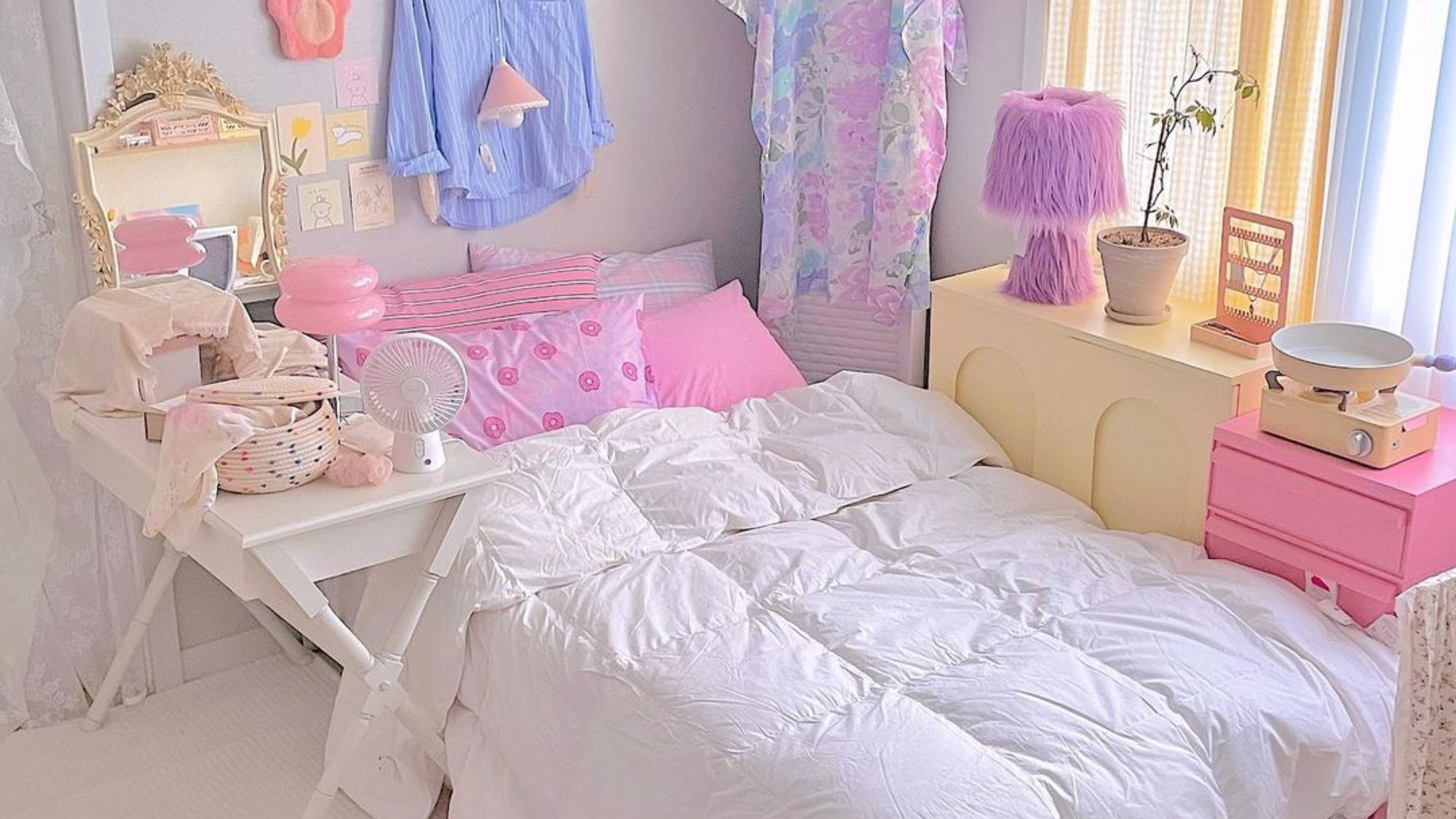How to make a small room look bigger — 6 helpful ways
All the tips and tricks for making a small room look bigger


Maximize space with our genius tips for making a small room look bigger. Many apartment dwellers and small homeowners are familiar with some basic hacks, but for most people, making a little room look larger can be hard to execute.
Decluttering and thoughtful organization are two great starting points when trying to make a space look larger, but luckily, there are more out-of-the-box strategies that can take things a step further. Being clever with lighting tricks and using multifunctional furniture are two examples.
If you’re hoping to maximize space in a small room, these six hacks will help you nail it. A more open, airy home awaits you.
1. Swap table and floor lamps for wall lights
When working with a small room you should always look to free up as much floor space as possible. “Swapping floor lamps for mounted wall lights will illuminate your room corners without encroaching on precious space,” says Julia Barnes, head buyer at ValueLights.
This can work particularly well in the bedroom, Barnes adds. “Switching out your bedside table lamps for a wall light helps to keep your bedroom looking sleek and refined.” This can also create space on your bedside table for your essentials, like a book, candle, or alarm clock.
On the same note, opting to use sconces rather than table lamps is another good way to free up room on consoles, desks, and nightstands. This stylish option from Amazon is rated well and doesn't require any screws or drilling. Try to utilize your wall space to get the most out of your space. Sconces can also add a more finished, well-designed look to your home.
2. Avoid patterns to reduce visual clutter
When you finally have your own place, it can be tempting to go all out with your personal style. Using patterns and a lot of color might seem like a fun way to add personality to your home, but too much of it can create visual clutter, making your space feel tighter in the process.
Get small space home decor ideas, celeb inspiration, DIY tips and more, straight to your inbox!
“Visual clutter is often a misunderstood concept when it comes to interior design — it’s less about how a room looks and more about how it feels,” says Barnes. “This means it’s important to not only consider the physical items you keep on display in your home but also the design elements of your interiors.”
One way to reduce visual clutter is to avoid any loud patterns, paint, or wallpaper. Maximalism has been popular in the interior design world lately, but hopping on this trend will only make a small home feel busier.
3. Make the most of multi-purpose furniture
Multi-purpose furniture is a tried-and-true space-saving solution. Barnes notes that it’s a lifesaver when it comes to furnishing a small space because it allows you to get several functions out of one item, freeing up precious space for other pieces.
“While the trundle bed has become a recognized staple, there’s plenty of other multi-purpose furniture solutions that often go under the radar,” Barnes says.
In addition to large furniture items, you can also source items like floor lamps with built-in shelves or ottomans with storage space — like this Amazon's Choice square ottoman. Doing ample research on multifunctional furniture options that will score you the most use will go a long way when designing a small home.
4. Keep window treatments simple
Another well-known design tip is that proper lighting always makes a space look larger. This is why it’s impactful to maximize the natural light available to you.
“Curtains and drapes can be lovely additions for adding both ambiance and decorative interest to your home, however, if you’re solely looking to make your room feel more spacious, they can make windows feel overcrowded and block out precious light,” Barnes explains.
The solution? Roller blinds, like this affordable pick from Walmart, which are a sleeker option that will allow you to completely open up your window space during the day.
5. Add vertical lines
“A great trick to make a room seem bigger is to create a vertical path of vision,” Barnes says. For example, running wood paneling or installing striped wallpaper can help guide the eye up towards the ceiling, having the effect of elongating the space.
If you’re looking for a more quick or affordable fix, using tall, slender floor lamps will have a similar effect, bringing attention to the height of the room.
6. Take advantage of awkward corners
Maximizing every nook and cranny is the key to making a small room appear bigger. This can also help you incorporate decorative items that you love into your space.
One great hack for styling nooks and awkward corners is to add a mirror, which will enhance the perceived size of your room while also bringing in more light. Bonus: You can pretty much add a mirror anywhere and they double up as both decor and a functional living staple.
Making the most of what little space you may have is essential for renters and small homeowners. Thankfully, you can apply these tips to any room — even your living room can look bigger with a few tricks.

About me:
Kara Thompson is a Denver-based journalist with over five years of experience writing lifestyle content. She has written for a variety of publications, including townandcountrymag.com, elledecor.com, goodhousekeeping.com, and Parents, where she covered all things home, food, fashion, travel, and holidays. During her time on staff at Parents, Kara launched her own home decor and organization column named Save My Space. In 2022, she left her full-time job as an editor and started her own writing, editing, and social media firm, Kara Thompson and Co.
Tennis, New York City, bourbon cocktails, and her sister's German Shepherd are a few of her favorite things.